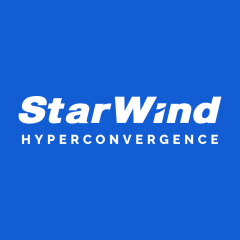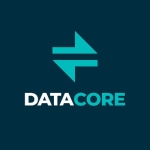What is our primary use case?
We have a failover Hyper-V cluster and a stand-alone Veeam server. We back up our VMs via Veeam. We wanted to get our backups 3-2-1 compliant with a backup to disk backup, a second backup to another medium that was a virtual tape in our case, and backups to the cloud.
We had a second physical server with tons of storage, so we installed StarWind. We were able to create a VTL and have tons of virtual tapes. We utilized iSCSI and were able to get Veeam to use this VTL as a destination for tape backups
In addition to Veeam being able to back up to tape now, we were also able to get the StarWind software to connect with our preferred storage vendor, Wasabi. Now, we back up to disk, back up to tape, and then ship those tapes offsite automatically to Wasabi.
The StarWind software was easy and quick to implement/setup and now our backup process is fully automated.
How has it helped my organization?
Our backups are 3-2-1 compliant, which satisfies several audits and cybersecurity/insurance questionnaires. In addition, the process is fully automated.
We now have multiple copies of our backups and in the event of a complete disaster we also now have a DR strategy in place.
Prior to this solution, we had a single point of failure when it came to backups. Now we, essentially have three targets, two of which are completely air gapped for security.
Lastly, the virtual tapes I've been told are impervious to ransomware.
What is most valuable?
A great feature is that I basically set it and forget it, as everything is automatic. This is one less major thing to worry about.
Before, we had a lot of stock and pressure on our singular backup server. It carried a lot of weight. Now with the VTL software in place, we have three backup targets. The primary backup server is still critical but if that server were to go down, we would still have backup data intact. If our data center went down, we would still have backup data intact thanks to the offsite options.
We can rest easier knowing our data is fully protected. The fact we have a DR strategy is priceless.
What needs improvement?
The console is something that I feel could be improved. There is nothing technically wrong with it, but it can be jazzed up and/or made to be a little more intuitive. Perhaps introduce a few right-click options, as that's my general go-to approach as opposed to searching for specific menu items.
I also feel that when dealing with a magnitude of tapes perhaps better formatting or color-coding will help locate or identify tapes easier than scrolling through the list. Also if the lists' real estate on the screen could be increased that would be helpful as well.
Other than that, I have no complaints or issues with the software.
For how long have I used the solution?
We have been using StarWind Virtual SAN for six months.
What do I think about the stability of the solution?
I haven't had any issues with the app becoming unusable. It's very stable and I have yet to experience a problem with it.
What do I think about the scalability of the solution?
The software can be upgraded with each release, so it's very scalable.
How are customer service and technical support?
The technical support is amazing. Five stars. They are quick to respond and are able to handle issues very quickly and provide great feedback and explanation.
Which solution did I use previously and why did I switch?
We did not use another similar solution prior to this.
How was the initial setup?
The initial setup was very straightforward and simple. I had the support team guide me along the way but the setup process was intuitive and there was nothing confusing about it.
What about the implementation team?
I implemented it through their support team. After we purchased the software, they helped set us up. They were very knowledgeable and fast. We had tape backups working in minutes.
What was our ROI?
I don't have exact figures in terms of ROI but I can say the product was well worth the cost.
What's my experience with pricing, setup cost, and licensing?
The cost was ultimately low to implement, which allowed us to be 3-2-1 complaint.
Which other solutions did I evaluate?
We did not evaluate other options.
What other advice do I have?
After we purchased the software, we were able to contact support right away. I would suggest you take advantage of this, as they are quick to respond and got my software up and running literally within minutes.
Which deployment model are you using for this solution?
On-premises
Disclosure: My company does not have a business relationship with this vendor other than being a customer.
















We have been looking to retire our Mac Drobo and found the StarWind Virtual environment as a potentially perfect replacement using the Dell R750xs PowerEdge environment.
We currently use Drobo between our Mac and Windows domains to bridge our virtual environment in Nutanix. Our current Drobo configuration requires a Head Mac Unit to be attached to the Drobo due to performance issues for translation directly from Macs to our Windows share and then to Drobo.
Pros: Knowledgeable friendly staff.
Simply works easily to set up and configure and administrate.
Cost savings compared to other technologies.
Simple, straightforward easy approach for users.
Cons: None noted or found during our test phase every question or concern we've had has been quickly addressed by staff.
Overall, I can highly recommend StarWind Virtual SAN for any virtualization environment looking for a reliable and cost-effective solution and savings.
We currently use Drobo between our Mac and Windows environments to bridge our virtual environment in Nutanix. Our current Drobo configuration requires a Head Mac unit to be attached to the Drobo due to performance issues for translation directly from Macs to our windows share and then to Drobo. In our testing, we found no significant issues performing these functions.
Consider StarWind and its Staff for any virtual environment looking for reliable and cost-saving solutions.